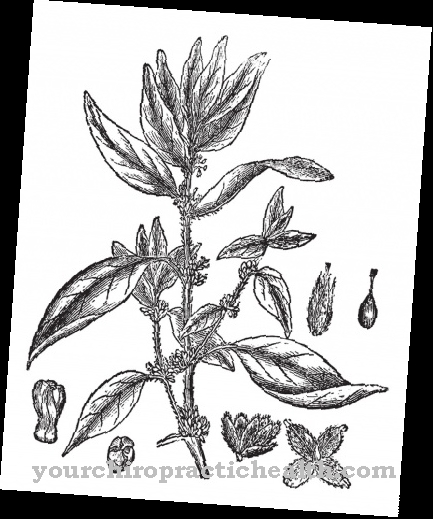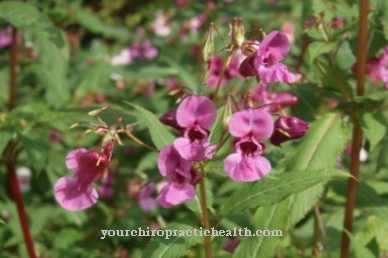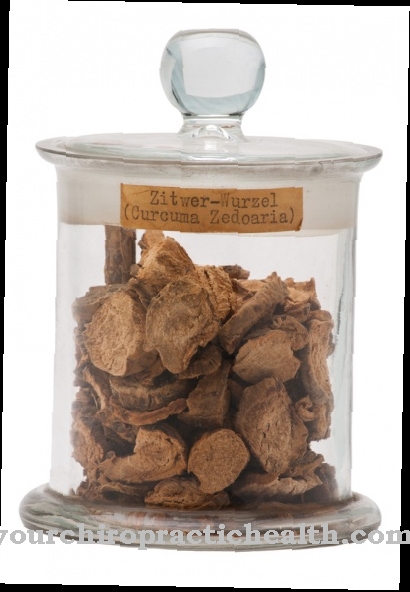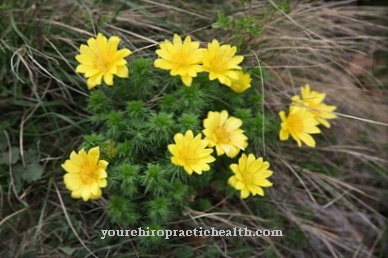The Spice lily is a product that in most cases you will only come across Europe in exotic specialty shops or in the greenhouse of lovers of Far Eastern botany. This plant has much more to offer than just being a beautiful decoration for the winter garden.
Occurrence & cultivation of the spice lily

The consistency of the yellowish-white interior of the root is soft. The spice lily is originally native to India, but is now also cultivated in parts of Southeast Asia and China. Like all ginger plants, the tuber is characterized by a sharp and strongly aromatic taste and an intense, spicy smell.
Effect & application
Sand ginger is used as a spice in Malaysian, Balinese and Indonesian cuisine, but is mainly used as a medicinal plant in traditional healing teachings, especially in Ayurvedic medicine. It is an Indian healing art, the aim of which is to bring consciousness and body into balance. Here the spice lily is used because of its antibacterial and anti-inflammatory effects to treat various inflammatory diseases.
The spice lily is also said to help with diabetes mellitus and obesity. The roots of the plant are particularly valued for their pain-relieving properties. It is therefore often used to relieve headache and toothache, as well as for rheumatoid therapy. For colds and sore throats, a mixture of honey and a powder made from the tubers of sandingwer has proven itself.
Sand ginger can be made into a stimulating tea that wakes you up without being nervous. Traditional Thai medicine literature also describes the use of the leaves and flowers of the spice lily to treat the fungal skin infection, branworm.
Furthermore, the spice lily is said to have appetizing, digestive and laxative properties, which is why it is also used against digestive disorders. The essential oils it contains and the strong aromatic smell have led to the spice line being used as an ingredient in the manufacture of cosmetic products.
In addition to perfumes, powders and creams, these include above all shampoos, as the medicinal plant has proven to be a successful remedy for dandruff in Asia. In traditional Chinese medicine, the spice lily is used to relieve stress, restlessness and depression. The reason for this is probably the euphoric property that is said to be the plant.
Aphrodisiac and even intoxicating effects of the plant have already been reported. Many of the effects described in traditional medicine are now also being researched in modern medicine. The ingredients of the spice lily could u. a. antiviral, antibacterial, antiallergenic, antioxidant, aromatherapy, pain reliever, antihypertensive, calming and anti-tumor effects are demonstrated.
Importance for health, treatment & prevention
The importance of the spice lily for health and the treatment of diseases is currently not very great outside of the Indian and Asian regions. But that may change as interest in the plant for cancer research grows. The active ingredient kaempferol contained in the plant is part of several studies that deal with the treatment of breast cancer.
Researchers found evidence that kaempferol may help prevent lung and pancreatic cancer. In addition, a change in patient awareness of the composition of drugs has been observed in recent years. Sand ginger could become more important as a natural alternative to conventional pain treatment, as it does not lead to stomach problems like some of the conventional preparations, but even counteracts digestive problems.
The pain-relieving and anti-inflammatory effects of the spice lily has already been proven in animal experiments. In the meantime there are more and more doctors who, in addition to traditional medicine, also train in the areas of herbal healing methods and apply them in a supportive manner if they are interested and necessary. In this sense, treatment with spice lily products in the flu season would be a complementary and gentle therapy for sore throats.
Kaempferia galanga can even be used as a preventive measure against colds: Eating a piece of the root with a little salt twice a day should help prevent colds. For rheumatism patients who have not yet been able to achieve the desired success with conventional therapy options, it may also make sense, after consulting their doctor, to try a treatment with preparations made from sand ginger root.
Kaempferia galanga can also contribute to increasing health and general well-being in everyday life. For example, it would be interesting to consider replacing beverages containing caffeine with spicy lily tea. This can be brewed from commercially available dried slices of the root.
Not only coffee, but also the increasingly popular energy drinks, in addition to the desired stimulating and awakening effect, can ultimately have dangerous side effects that could be avoided by switching to spice lily tea.
























.jpg)


